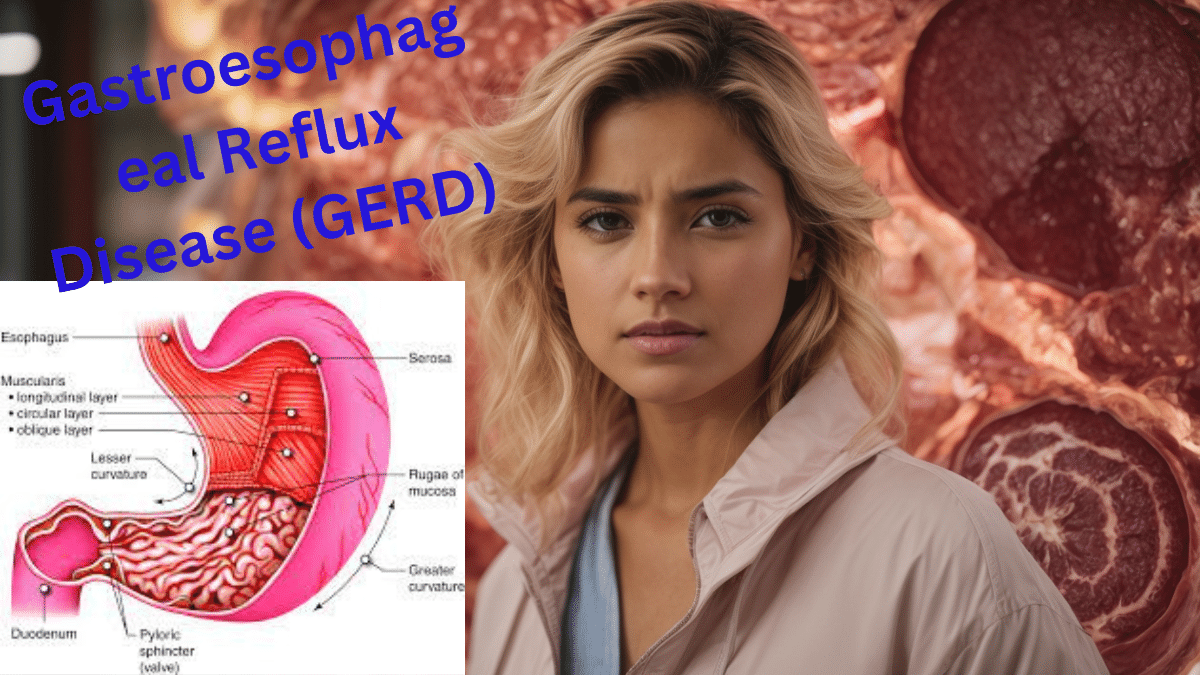1. Discover the top 5 proven methods to retain your youth and embrace a vibrant lifestyle on our website. 2. Unlock the secrets to maintaining your youthful vigor with our carefully curated list of the 5 best ways to retain your youth. 3. Explore our website to find the ultimate guide on the top 5 ways to retain your youth and reclaim your vitality.
Ways to retain youth best 5 ways
In today’s fast-paced world, the constant pursuit of youth and vitality has become a common goal for many individuals. Whether it be through skincare routines, fitness regimens, or dietary habits, maintaining a youthful appearance and mindset has become a top priority for individuals of all ages. While there is no fountain of youth that can halt the passage of time, there are several effective ways to retain a sense of youthfulness and vitality as we age.
Youthful Vitality and boost energy: In this article, we will explore the top five ways to retain youth, encompassing physical, mental, and emotional strategies that can help individuals look and feel more youthful. One of the key ways to retain youth is through regular exercise and physical activity. Maintaining a consistent exercise routine can help improve overall health, boost energy levels, and promote a more youthful appearance.
Additionally, a healthy diet rich in fruits, vegetables, and whole grains can provide essential nutrients that support skin health and overall well-being. Beyond physical health, staying mentally active and engaged through activities such as reading, puzzles, or learning new skills can help keep the mind sharp and prevent cognitive decline.
Cultivating strong relationships and connections with loved ones can also contribute to a sense of youthfulness by fostering a sense of community and support. By incorporating these strategies into daily life, individuals can take proactive steps towards retaining youth and vitality as they age.

1.”Prioritize Regular Exercise: The Ultimate Key to Youthful Vitality” 2.”Nourish Your Body: Optimal Nutrition for Longevity and Radiance” 3.”Quality Sleep: Restorative Rest for Renewed Energy and Health” 4.”Hydration Essentials: Keeping Your Skin and Body Youthfully Plump” 5.”Stress Management Mastery: Unlocking the Secret to Ageless Well-being”
1.”Prioritize Regular Exercise: The Ultimate Key to Youthful Vitality” and boost energy
One of the most effective ways to retain youth and maintain vitality as we age is through regular exercise. Physical activity not only helps to improve our overall health and well-being, but it also plays a crucial role in preserving our youthfulness. Regular exercise helps to keep our bodies in shape by boosting metabolism, promoting weight loss, and reducing the risk of chronic diseases such as heart disease, diabetes, and osteoporosis.
It also helps to improve our cardiovascular health, strengthen our muscles, and enhance our flexibility and balance. Moreover, exercise is known to boost our mood and mental health by releasing endorphins, the “feel-good” hormones, in the brain. This can help to reduce stress, anxiety, and depression, which are common problems that can affect our overall well-being and quality of life as we age.
In addition, regular physical activity has been shown to improve cognitive function and memory, which are key components of maintaining youthfulness and vitality. Exercise stimulates the production of new brain cells, improves blood flow to the brain, and enhances neural connections, all of which can help to preserve mental sharpness and cognitive abilities as we get older.
Furthermore, staying active and engaging in regular exercise can help to slow down the aging process by reducing inflammation, boosting the immune system, and promoting cellular repair and regeneration. This can help to prevent premature aging, wrinkles, and age-related decline in physical and mental function.

To make the most of the benefits of exercise for retaining youth and vitality, it is important to prioritize regular physical activity in our daily routine. This can involve a variety of activities such as walking, jogging, cycling, swimming, dancing, strength training, yoga, or Pilates. The key is to find activities that you enjoy and that fit your fitness level and preferences.
It is recommended to aim for at least 150 minutes of moderate-intensity aerobic exercise or 75 minutes of vigorous-intensity aerobic exercise each week, along with muscle-strengthening activities on two or more days a week. This can help to improve your physical fitness, health, and well-being, and contribute to a more youthful and vibrant lifestyle.
In conclusion, regular exercise is the ultimate key to maintaining youthful vitality and well-being as we age. By staying active and engaging in physical activity on a regular basis, we can reap a wide range of benefits that can help to preserve our youthfulness, improve our health and fitness, and enhance our quality of life.
So, lace up your sneakers, hit the gym, go for a run, or attend a fitness class – whatever it takes to get moving and stay youthful and vibrant for years to come.
2.”Nourish Your Body: Optimal Nutrition for Longevity and Radiance” you want boost energy?
In the quest to retain youth and vitality, taking care of one’s body through optimal nutrition is paramount. The food we consume directly impacts our overall health and well-being, playing a crucial role in promoting longevity and radiance. It is essential to focus on nourishing your body with a variety of nutrient-dense foods that provide the necessary vitamins, minerals, and antioxidants for optimal function.
Incorporating a diverse range of fruits, vegetables, whole grains, lean proteins, and healthy fats into your diet is key to supporting your body’s cellular health and energy levels. One of the most important aspects of optimal nutrition for retaining youth is ensuring that you are consuming enough antioxidants. Antioxidants are compounds that help protect our cells from damage caused by free radicals, which can contribute to aging and chronic diseases.
Foods rich in antioxidants include berries, leafy greens, nuts, seeds, and colorful vegetables. By incorporating these foods into your diet, you can support your body’s natural defense mechanisms and promote a youthful glow from within. In addition to antioxidants, it is essential to prioritize hydration for long-term health and radiance.
Staying properly hydrated helps maintain optimal functioning of your body’s systems, supports healthy skin, and aids in detoxification processes. Drinking an adequate amount of water each day – typically around 8-10 glasses – can help keep your skin hydrated, reduce the appearance of fine lines and wrinkles, and promote a youthful complexion.
When it comes to optimal nutrition for retaining youth, it is also important to pay attention to the quality of the food you are consuming. Choosing organic, non-GMO, and minimally processed foods whenever possible can help reduce your exposure to harmful chemicals and additives that may contribute to premature aging and health issues.
By opting for whole, nutrient-dense foods, you can ensure that you are fueling your body with the best possible ingredients for longevity and radiance. Lastly, maintaining a balanced and varied diet is crucial for promoting overall health and vitality as we age. Eating a wide range of foods from different food groups ensures that you are receiving a full spectrum of nutrients that support your body’s needs.
A colorful plate filled with a variety of fruits, vegetables, whole grains, and lean proteins can provide you with the essential vitamins and minerals necessary for optimal function and longevity. In conclusion, nourishing your body with optimal nutrition is a fundamental aspect of retaining youth and radiance.
By focusing on consuming antioxidant-rich foods, staying hydrated, choosing high-quality ingredients, and maintaining a balanced diet, you can support your body’s natural processes and promote long-term health and vitality. Investing in your health through nutrition is a powerful way to take control of your aging process and enhance your overall well-being for years to come.
3.”Quality Sleep: Restorative Rest for Renewed Energy and Health”

Quality sleep is essential for retaining youth and maintaining overall health and well-being. In today’s fast-paced world, many people underestimate the importance of getting enough restorative rest each night. However, the benefits of quality sleep cannot be overstated. When we sleep, our bodies have the opportunity to repair and regenerate cells, tissues, and muscles,
Allowing us to wake up feeling refreshed and rejuvenated. Inadequate or poor-quality sleep can have a negative impact on our physical and mental health, leading to a variety of health issues such as obesity, diabetes, heart disease, and even premature aging. To ensure that you are getting the best possible sleep each night, it is important to establish a consistent bedtime routine and create a sleep-friendly environment.
This means turning off electronic devices at least an hour before bed, avoiding caffeine and heavy meals close to bedtime, and creating a dark, quiet, and cool sleep environment. It is also important to prioritize both the quantity and quality of your sleep. Most adults require 7-9 hours of sleep per night to function at their best, but it is equally important to focus on the quality of your sleep.
This means aiming for uninterrupted sleep cycles and deep, restorative rest that allows your body and mind to fully recover from the day’s activities. One way to improve the quality of your sleep is to practice relaxation techniques before bed, such as deep breathing, meditation, or gentle stretching. These activities can help to calm your mind and body, making it easier to fall asleep and stay asleep throughout the night.
Additionally, establishing a consistent sleep schedule can help to regulate your body’s internal clock and improve the overall quality of your sleep. This means going to bed and waking up at the same time each day, even on weekends, to ensure that your body gets the rest it needs to function optimally. By prioritizing the quality of your sleep and making it a priority in your daily routine, you can help to retain your youth, energy, and overall health.
Quality sleep is a cornerstone of a healthy lifestyle, and by investing in restorative rest each night, you can unlock the benefits of improved physical and mental well-being. In conclusion, quality sleep is essential for retaining youth and maintaining overall health and well-being. By establishing a consistent bedtime routine, creating a sleep-friendly environment.
Prioritizing both the quantity and quality of your sleep, practicing relaxation techniques, and maintaining a consistent sleep schedule, you can ensure that you are getting the restorative rest your body needs to function at its best. Remember, quality sleep is an investment in your long-term health and vitality, so make it a priority in your daily routine.
4.”Hydration Essentials: Keeping Your Skin and Body Youthfully Plump” and boost energy.

As we age, our body undergoes various changes that can impact our skin’s appearance and overall health. One key factor in maintaining youthful skin and a healthy body is proper hydration. Hydration is essential for keeping our skin plump, supple, and radiant, as well as ensuring that our organs function optimally. Water is the foundation of life and plays a vital role in maintaining hydration levels both internally and externally.
When it comes to our skin, hydration is crucial for maintaining its elasticity, firmness, and overall appearance. Dehydration can lead to dry, flaky skin, fine lines, wrinkles, and uneven texture. By staying properly hydrated, we can help combat these signs of aging and keep our skin looking youthful and radiant.
In addition to drinking an adequate amount of water each day, there are other ways to ensure your skin and body stay hydrated. Using a moisturizer that contains hydrating ingredients such as hyaluronic acid, glycerin, or ceramides can help lock in moisture and keep your skin hydrated throughout the day. Additionally,
incorporating a hydrating serum or facial oil into your skincare routine can provide an extra boost of hydration and nourishment for your skin. Maintaining hydration levels is not just important for our skin, but also for our overall health and well-being. Water is essential for proper digestion, nutrient absorption, circulation, and detoxification.
Staying hydrated can help prevent constipation, support healthy kidney function, and improve energy levels. It can also aid in weight management by helping to curb cravings and reduce unnecessary snacking. To ensure you are staying properly hydrated, it is recommended to drink at least eight glasses of water per day, or more if you are physically active or live in a hot climate.
It’s important to listen to your body and drink water whenever you feel thirsty, as thirst is a sign that your body needs hydration. Additionally, eating water-rich foods such as fruits and vegetables can also contribute to your overall hydration levels. Incorporating hydrating beverages such as herbal teas, coconut water, or infused water can also help keep you hydrated and add variety to your daily hydration routine.
boost energy: These beverages not only provide hydration but also offer additional health benefits such as antioxidants, vitamins, and minerals. In conclusion, maintaining proper hydration is essential for keeping your skin and body youthfully plump. By drinking an adequate amount of water, using hydrating skincare products, and incorporating hydrating foods and beverages into your diet,
You can help combat signs of aging, support your overall health, and keep your skin looking radiant and healthy. So, make hydration a priority in your daily routine and reap the benefits of a youthful and vibrant appearance.
5.”Stress Management Mastery: Unlocking the Secret to Ageless Well-being” retain youth with boost anergy.

Table of Contents
In the pursuit of retaining youth, one cannot overlook the indispensable role that stress management mastery plays in achieving ageless well-being. Stress is a natural part of life, but when left unchecked, it can wreak havoc on our physical, mental, and emotional well-being, ultimately accelerating the aging process. Therefore, learning to effectively manage and mitigate stress is crucial for maintaining a youthful and vibrant appearance.
One of the key aspects of stress management mastery is the ability to identify and address the sources of stress in our lives. By pinpointing the triggers that cause stress, we can better equip ourselves to implement strategies to reduce or eliminate them. This may involve practicing mindfulness, setting boundaries, or learning to say no to commitments that overload our schedules.
By taking proactive steps to address the root causes of stress, we can cultivate a greater sense of calm and equanimity in our daily lives. Another important aspect of stress management mastery is the cultivation of healthy coping mechanisms. Rather than turning to unhealthy habits such as excessive alcohol consumption or emotional eating in times of stress,
We can instead develop healthier coping strategies that promote overall well-being. Engaging in regular exercise, practicing relaxation techniques such as yoga or meditation, or connecting with supportive friends and family members can all help to alleviate stress and promote a sense of balance and harmony. Additionally, nurturing a positive mindset is essential for stress management mastery.
By cultivating a mindset of gratitude, optimism, and resilience, we can approach stressors with a sense of perspective and inner strength. Viewing challenges as opportunities for growth and learning, rather than insurmountable obstacles, can help to reframe our perception of stress and empower us to face difficult situations with courage and grace. Furthermore, fostering self-care practices is an integral part of stress management mastery.
Taking time to prioritize our physical, mental, and emotional well-being through activities such as self-care rituals, leisure activities, and relaxation techniques can help to replenish our energy reserves and fortify us against the detrimental effects of chronic stress. By investing in our own well-being and making self-care a priority,
We can cultivate a greater sense of inner peace and vitality that radiates outward, contributing to a more youthful and vibrant appearance. Finally, seeking professional support when needed is a crucial component of stress management mastery.
Whether through therapy, counseling, or coaching, reaching out for assistance from a trained professional can provide valuable insights and tools for addressing stress and navigating life’s challenges with greater resilience and grace.
By acknowledging when we need help and being willing to seek it out, we can tap into additional resources and support systems that can enhance our stress management skills and contribute to our overall well-being. In conclusion, stress management mastery is a cornerstone of ageless well-being, crucial for maintaining a youthful and vibrant appearance.
By addressing the root causes of stress, cultivating healthy coping mechanisms, nurturing a positive mindset, prioritizing self-care practices, and seeking professional support when needed, we can unlock the secret to ageless well-being and embrace a life of vitality, resilience, and inner peace.
In conclusion, maintaining a youthful appearance and energy levels can be achieved through a combination of factors including staying active, eating a healthy diet, getting enough sleep, managing stress, and staying hydrated.
By incorporating these five strategies into your daily routine, you can help retain your youth and enjoy a vibrant and healthy life for years to come. Remember, age is just a number – it’s how you take care of yourself that truly matters.
thanking and credit google


















































